In the figure (i), (ii) & (iii) shown the objects A, B & C are of same mass. String, spring & pulley are massless. C strikes B with velocity ‘u’ in each case and sticks to it. The ratio of velocity of B in case (i) to (ii) to (iii) is
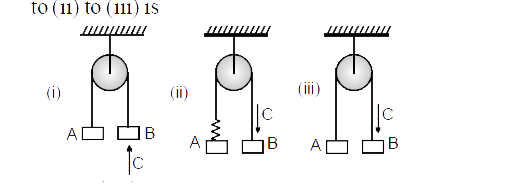
1:1:1
3:3:2
3:2:2
none of these
The correct Answer is:B
Step by step video & image solution for In the figure (i), (ii) & (iii) shown the objects A, B & C are of same mass. String, spring & pulley are massless. C strikes B with velocity ‘u’ in each case and sticks to it. The ratio of velocity of B in case (i) to (ii) to (iii) is by Physics experts to help you in doubts & scoring excellent marks in Class 12 exams.
Updated on:21/07/2023Topper's Solved these Questions
- CENTRE OF MASSBOOK - MOTIONCHAPTER - CENTRE OF MASSEXERCISE - Exercise - 2 (Level-II)
28 Videos
- CENTRE OF MASSBOOK - MOTIONCHAPTER - CENTRE OF MASSEXERCISE - Exercise - 3 Level-I
34 Videos
- CENTRE OF MASSBOOK - MOTIONCHAPTER - CENTRE OF MASSEXERCISE - Exercise - 1
71 Videos
- Capacitance BOOK - MOTIONCHAPTER - Capacitance EXERCISE - EXERCISE -4 LEVEL II
19 Videos
- CIRCULAR MOTIONBOOK - MOTIONCHAPTER - CIRCULAR MOTIONEXERCISE - EXERCISE - 4
16 Videos
Similar Questions
In the figure (i), (ii) and (iii) shown the objects, A,B and C are of same mass. String, spring and pulley are massless. C strikes B with velocity u in each case and stricks to it. The ratio of velocity of B in case (i) to (ii) to (iii) is-
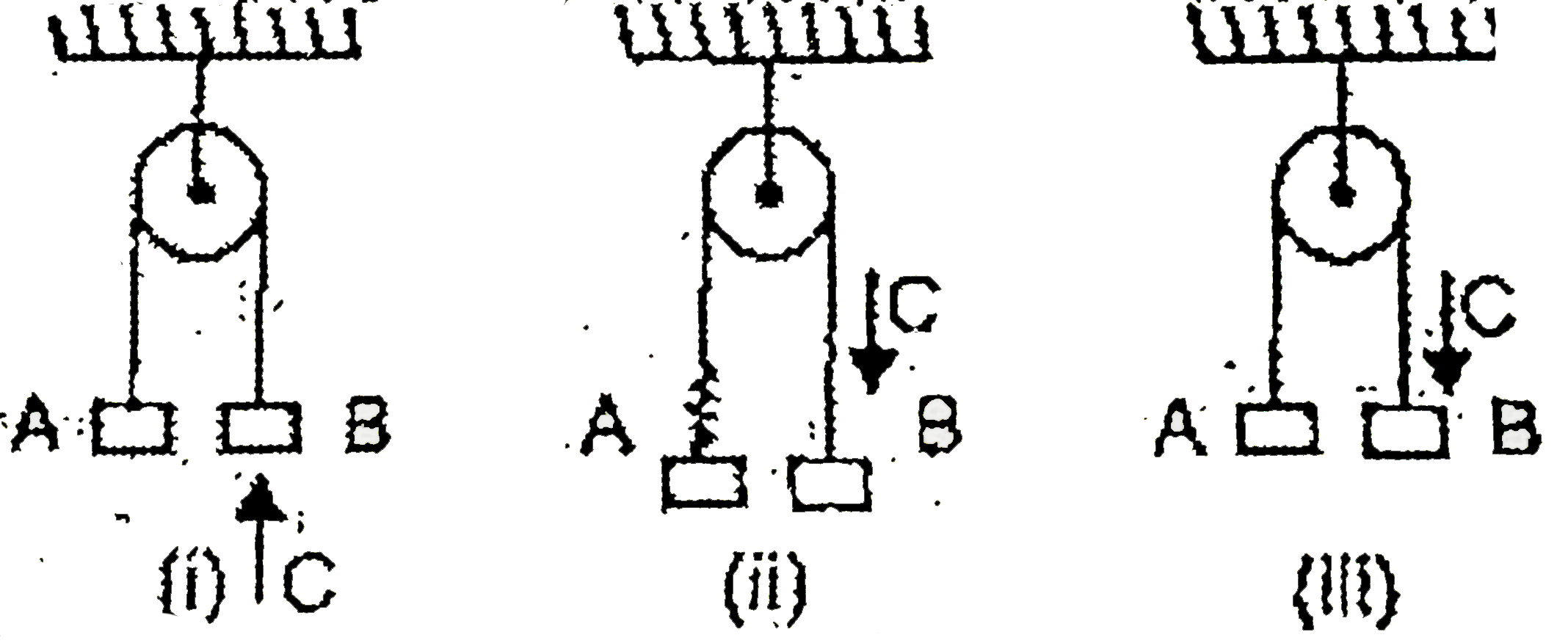
View SolutionFor any H like system, the ratio of velocities of electron in I, II & III orbit e.e.,V1:V2:V3 will be:
View Solution
Knowledge Check
In figures (a), (b) and (c) shown, the objects A, B and C are of same mass. String, spring and pulley are massless. C strikes B with velocity u in each case and sticks it. The ratio of velocity of B in case (a) to (b) to (c) is
 A(a) 1:1:1B(b) 3:3:2C(c) 3:2:2:D(d) 1:2:3
A(a) 1:1:1B(b) 3:3:2C(c) 3:2:2:D(d) 1:2:3Two masses 2m and m are connected by an inextensible light string. The string is passing over a light frictionless pulley. The mass 2m is resting on a surface and mass in is hanging in air as shown in Fig. A particle of mass in strikes the mass in from below in case (I) with a velocity v0 and in case (II) strikes mass in with a velocity v0 from top and sticks to it.
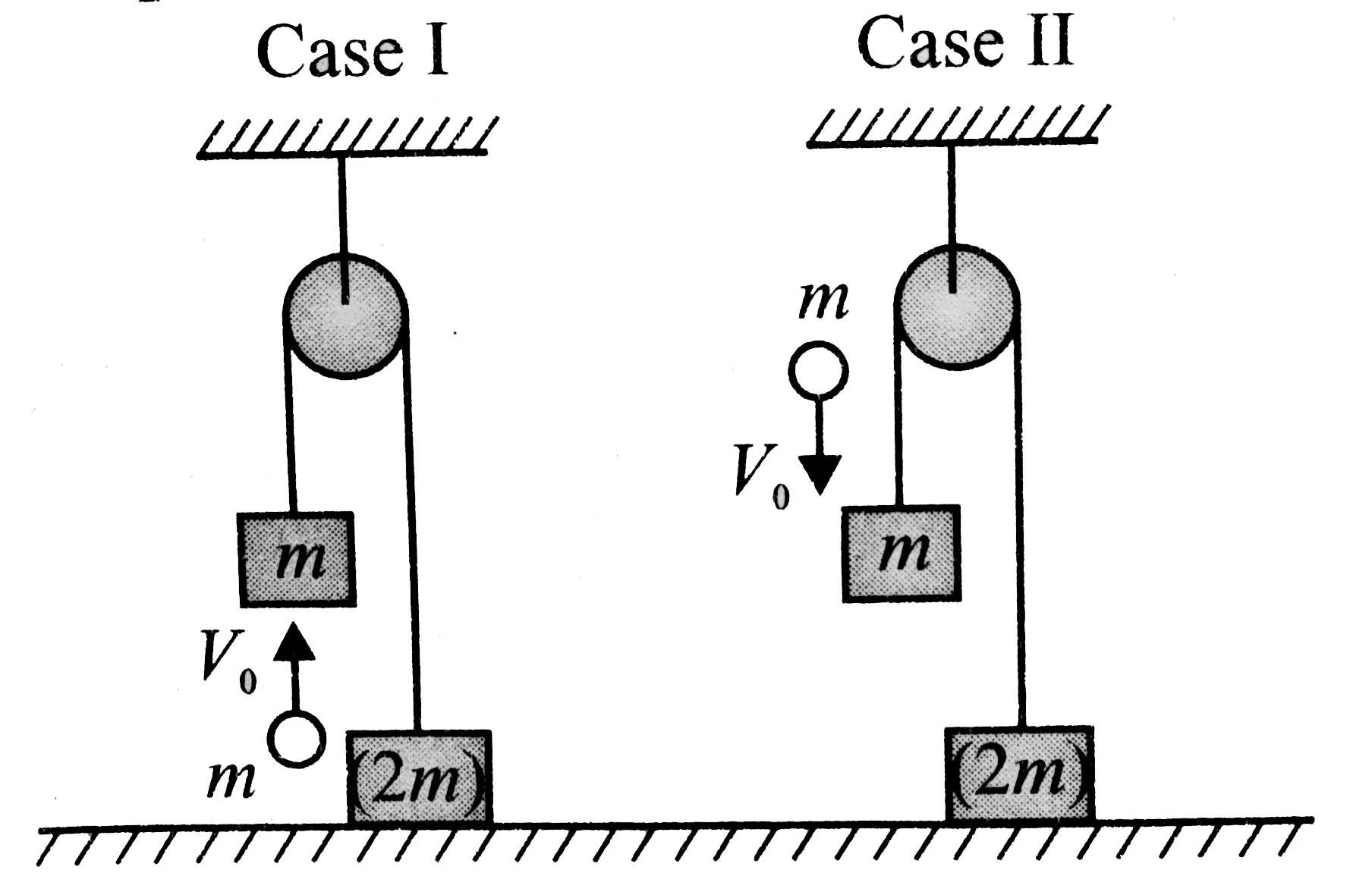 AThe conservation of linear momentum can be applied in both the cases just before and just after collision.BThe conservation of linear momentum can be applied in case I but cannot be applied in case II just before and just after collision.CThe ratio of velocities of mass m just after collision in first and second cases is 12.DThe ratio of velocities of mass m just after collision in first and second case is 2.
AThe conservation of linear momentum can be applied in both the cases just before and just after collision.BThe conservation of linear momentum can be applied in case I but cannot be applied in case II just before and just after collision.CThe ratio of velocities of mass m just after collision in first and second cases is 12.DThe ratio of velocities of mass m just after collision in first and second case is 2.In the pulley system shown the movable pulleys A,B and C have mass m each, D and E are fixed pulleys. The strings are vertical light and inextensible Then
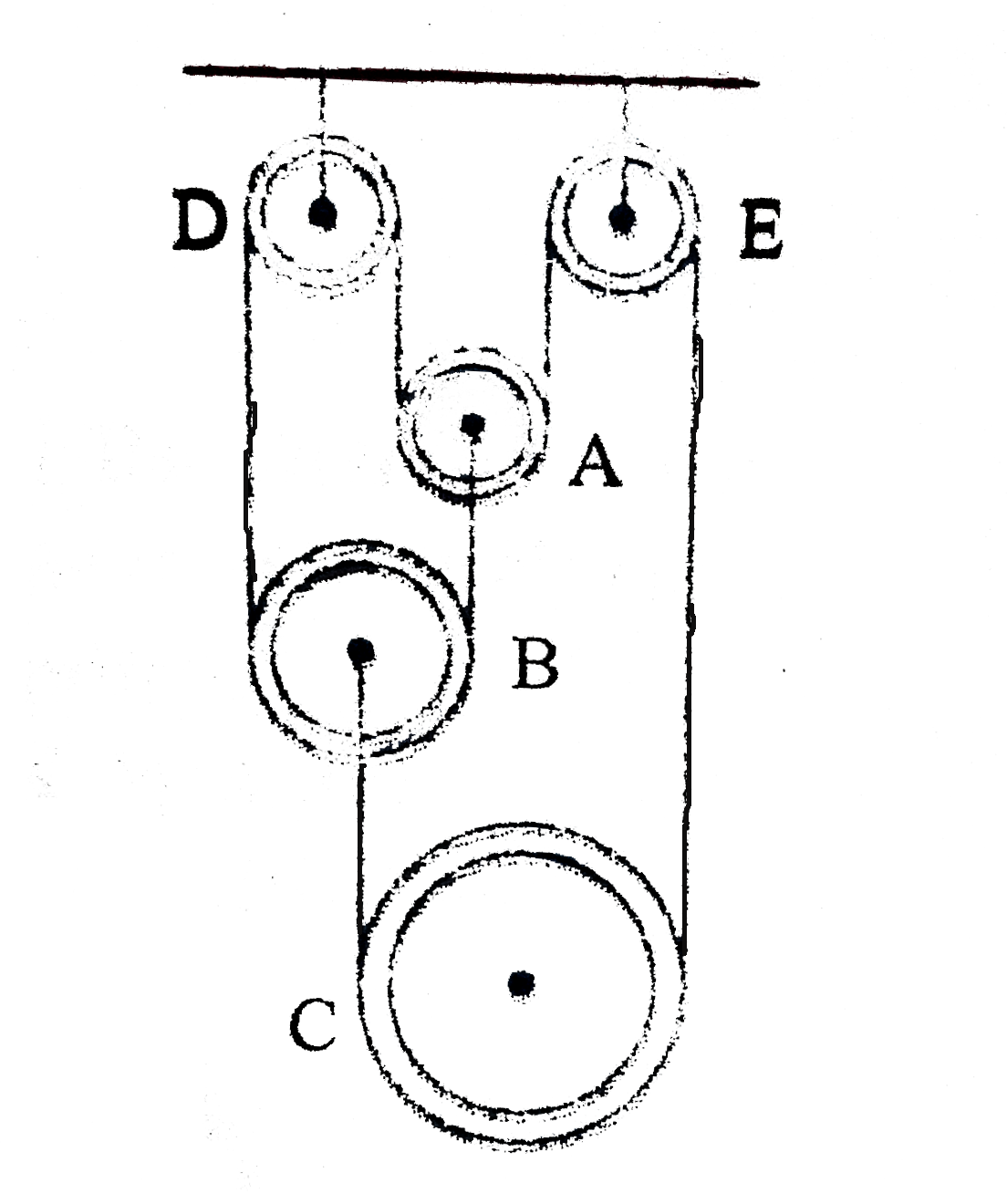 .Athe tension throughout the string is the same and equals T=2mg3 .Bpulleys A and B have acceleration g3 each in downward direaction and pulley C has acceleration g3 in wpward direaction .Cpulleys A,B and C all have accleration g3 in downward direction .Dpulley A has acceleration g3 in downward direction and pulleys B and C have acceleration g3 each in upward direction .
.Athe tension throughout the string is the same and equals T=2mg3 .Bpulleys A and B have acceleration g3 each in downward direaction and pulley C has acceleration g3 in wpward direaction .Cpulleys A,B and C all have accleration g3 in downward direction .Dpulley A has acceleration g3 in downward direction and pulleys B and C have acceleration g3 each in upward direction .
Write the power set of each of the set (i) {a,b}, (ii) {a,b,c}.
View SolutionShow that each of the following is meaningless. Give reason in each case. (i) VC (ii) IL (iii) VVII (iv) IXX
View SolutionShow that each of the following is meaningless. Give reason in each case.
(i) XXXX
(ii) VX
(iii) IC
(iv) XVV
View SolutionFollowing letters of English alphabet are symmetrical about a line. Identify, a line of symmetry in each case: (i)A (ii)B (iii)C (iv)D (v) E
View SolutionThe graph in Figure shows the positions of a body at different times. Calculate the speed of the body as it moves from (i) A to B (ii) B to C and (iii) C to D.
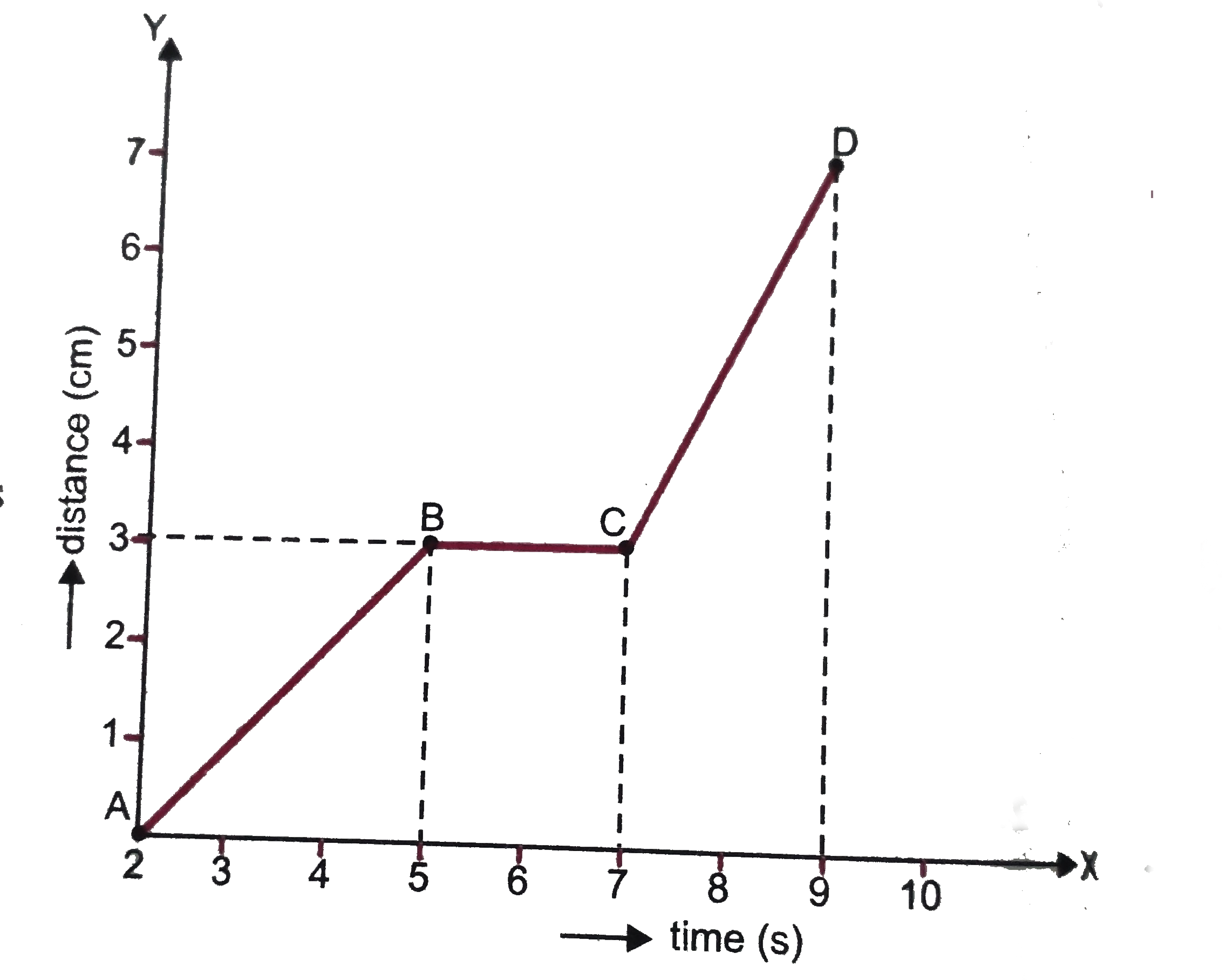
View Solution
